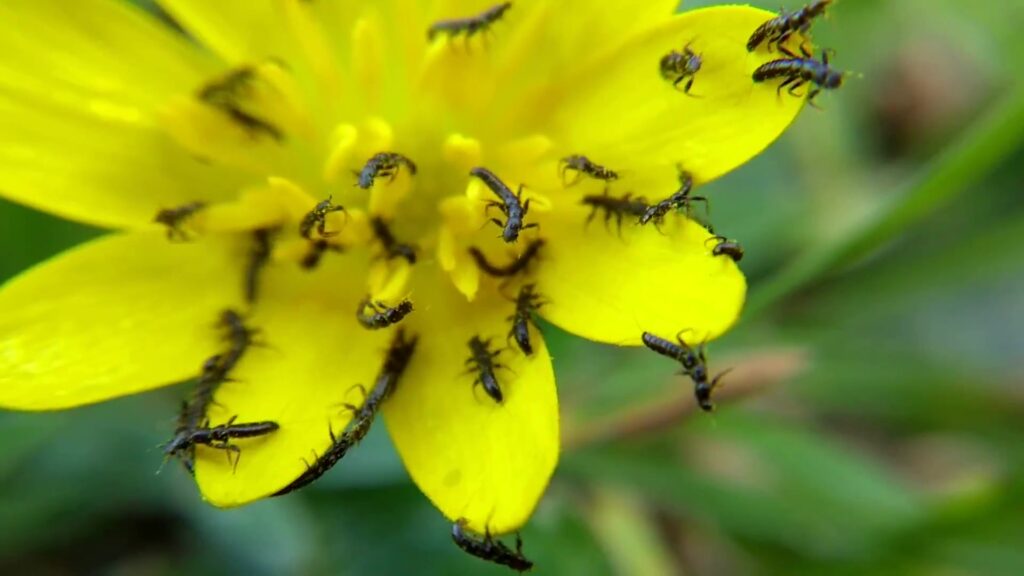Easy to identify and a downright astonishing lifecycle – conservation officer Mariko Whyte takes a closer look at one of our most intriguing native insects

Of the UK’s eight native oil beetle species, three are now extinct and three are extremely rare. All are under threat, suffering dramatic declines due to changes in how we manage the countryside, as their fate is intertwined with some of our most important native pollinators.
The most common species, the violet oil beetle (Meloe violaceus) and the black oil beetle (Meloe proscarabaeus) are found across Dorset, and are widespread throughout Britain. Up to 30mm in length, both species are black, often with a bluish metallic shine. Despite the names they are not easy to tell apart! Unusually among beetles they are flightless, having reduced wing cases, a sausage-like segmented body and long antennae.
The oil in their name refers to a noxious orange fluid exuded from their joints when they are threatened, repelling predators.
The oil beetle’s way of life is just as odd as its appearance, inextricably linked with certain species of solitary mining bees. Sharing the same flower-rich habitats as their associated bee species, black oil beetles are found mainly in grasslands while violet oil beetles are commonly found in woodland.
Adults emerge from the ground in spring and can be spotted bumbling around on sunny days between February and May, grazing on vegetation and seeking a potential mate. Males have modified segments in their antennae which they use in courtship to clasp and stroke the female’s antennae (presumably to get her in the mood).

Bee parasites
The female lays batches of about 1,000 eggs in shallow burrows dug in loose, warm soil – laying an astonishing 40,000 eggs in her short two-month lifespan. For black oil beetles, the eggs hatch into active earwig-like larvae within a few weeks, with thousands of 2mm orange triungulins (the baby beetles) scrabbling to reach the top of nearby flowers, scurrying with frenetic energy. Then they wait for passing insects to grasp onto.
Violet oil beetle triungulins are black and don’t emerge from the ground for a whole year after eggs are laid, so they are active earlier in the spring, overlapping with the adult generation.
The oil beetle larvae are effectively parasites of mining bees, hitching a lift from the flower to the bee’s nest. Once inside, the triungulins feed on the egg and pollen stores of their host and quickly moult to more typical grub-like larvae, eventually pupating and overwintering as adults underground before emerging as a new generation in the spring.
Visit dorsetwildlifetrust.org.uk to learn more about Dorset’s beetles.


